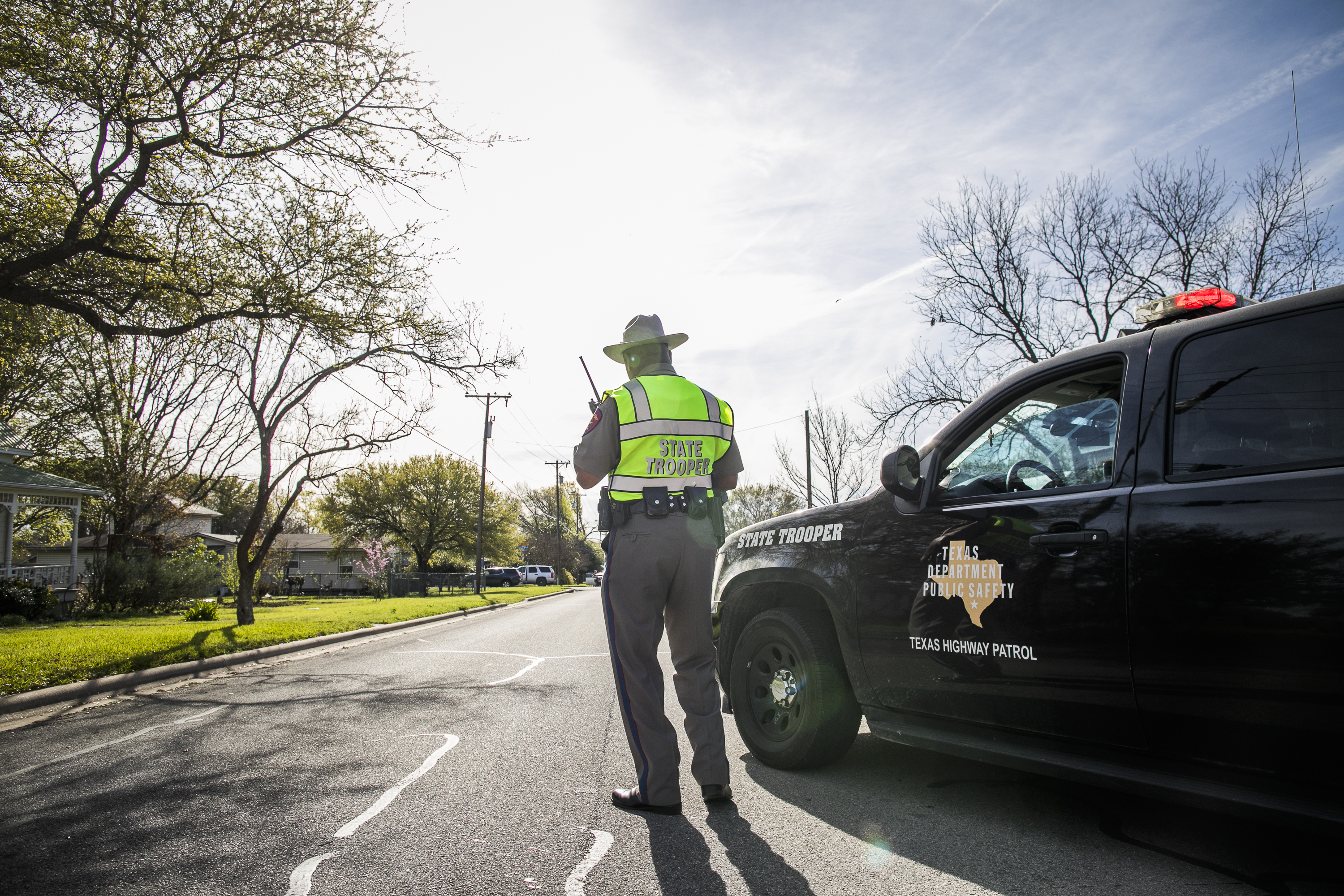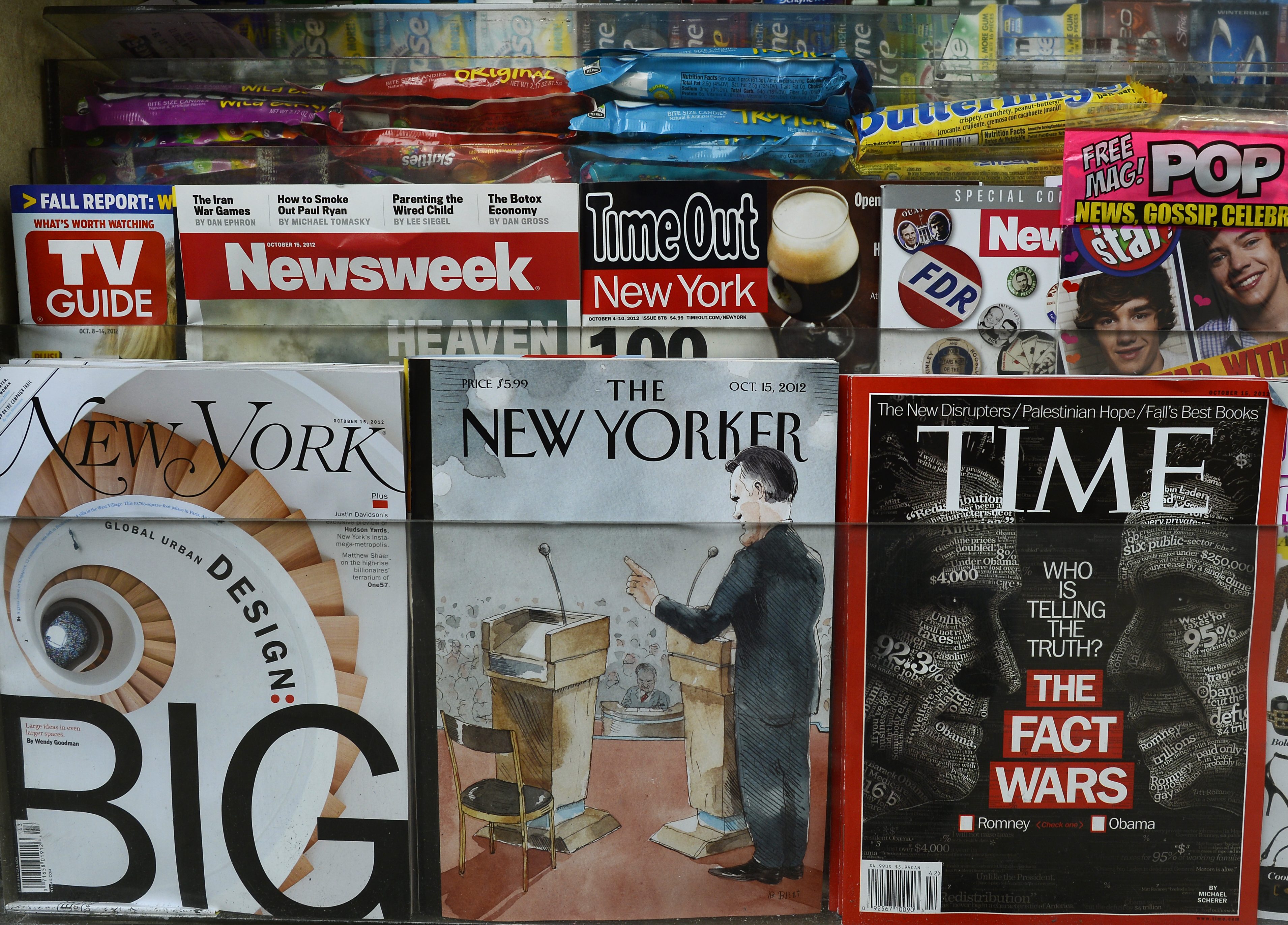A weekly newsletter for Pacific Standard Premium members.

(Photo: Drew Anthony Smith/Getty Images)
Radicalizing Young White Men
Over the past few weeks the country has experienced a number of harrowing and deadly—and ultimately preventable—incidents. There was the mass-shooting perpetrated by Nikolas Cruz at Marjory Stoneman Douglas High School in Parkland, Florida. And a series of bombings in the Austin, Texas, area that resulted in the deaths of two people, and then the bomber himself, Mark Conditt. This is a suicide that’s particularly challenging for the victims of Conditt’s crimes.
These most recent tragedies are part of a lineage of terrible acts carried out by young white men in America. Columbine, Charleston, Isla Vista—and many other incidents—are all connected in some way. How? Young men, radicalized through disparate means, but leading to the same violent result.
We have written extensively on these issues, and tried to identify and trace the roots of these radicalizations. This past week contributing writer David M. Perry wrote about how all of these so-called “lone wolf” shooters come together to make a pack that is creating terror across the country. Contributing writer Arvind Dilawar considered the feelings of aggrievement that drive men to commit these heinous acts, and argued that it’s misplaced anger that is to blame. And Gabriel Thompson traced the radicalization of one of the faces of the alt-right, Nathan Damigo, from the perspective of his brother in a lengthy feature, “My Brother, the White Nationalist,” a story that illustrates the complex factors that can lead to this kind of thinking.
On the other side, there was the “March for Our Lives” rally last weekend, which saw a spirit of inclusion and activism driven by teenagers in an attempt to stop the gun violence that has become a regular part of the news cycle. At Pacific Standard we aim to help unearth the sources of radicalization in order to figure out the best ways to combat it.
Since We Last Spoke: In Hawaii, Is Housing Enough?
Updates to stories from the Pacific Standard archive.
Data released recently shows that, while Hawaii still has one of the highest homelessness rates in the United States, the number of homeless people fell in the last year by 9 percent, from 7,921 to 7,220. The implementation of “Housing First” strategies played a significant role in the drop, with Hawaii Governor David Ige funneling millions of dollars into social services, including housing.
But, as Will McGrath reported in Pacific Standard, for some individuals suffering from substance abuse, housing is not always the cure-all. McGrath visited Fort Lyon, a psychiatric hospital-turned-prison-turned-“sober utopia” in a remote region of Colorado, where the state’s chronically homeless can recover from addiction in a campus-like, supportive environment before seeking their own housing.
James Ginsburg, the director and co-founder of Fort Lyon, explained to McGrath that some people with substance-use disorders have to get out of their current environment in order to break their destructive habits.

(Photo: Timothy A. Clary/AFP/Getty Images)
PS Picks
PS Picks is a selection of the best things that the magazine’s staff and contributors are reading, watching, or otherwise paying attention to in the worlds of art, politics, and culture.
A Question of Identity: The New Yorker‘s Rachel Aviv is a master of mental-health narratives, especially the ones that break the diagnostic molds of modern psychiatry. Her latest is a haunting portrait of Hannah Upp, a young American teacher who keeps disappearing.
After Upp vanished the first time for three weeks in 2008, she was diagnosed with a dissociative fugue—a strange disorder in which otherwise healthy individuals lose their sense of identity. Often they adopt a new one and travel great distances, compelled to wander by a desire that is overwritten when their memories return— weeks, months, or years later.
Upp had no memories of her fugue states, which, unlike most fugue cases, appear to have been marked by a “complete absence of identity,” her mother told Aviv in “How a Young Woman Lost Her Identity.” It’s scary enough to imagine that our bodies can wander about the world, for days, weeks, years, without anyone we’d recognize behind the wheel. But Upp’s story is so chilling not only for Aviv’s rare talent to make us empathize with her subjects, but because it makes us question our solipsist reality. Most people like to believe that, beneath our memories and experiences and behavior, is something unique and enduring that holds it all together—a selfhood that makes us, us. What if you’re not who you think you are? What if the inner mind is really an abyss?
—Kate Wheeling, Staff Writer
What Would the World Look Like if It Could See Itself?: Garry Winogrand possessed a natural gift for freezing human drama. In the 1960s and ’70s, on some of New York’s hottest afternoons, the Bronx native would double-check the exposure on his Leica M4 and amble toward oncoming pedestrian traffic, sometimes flushing entire rolls of film between avenues. Winogrand was never shy, with sleeves rolled up to his biceps and a face seemingly designed to circumscribe the camera; he truly lived the scenes he shot. His penchant for using wide-angle lenses gave Manhattan a lopsided stretch, a place with everything in view but only a few things in focus. Look at any Winogrand photo and you’re almost always tilting your head sideways, squinting under his selected sunlight. Most of his images demonstrate only a provincial respect for space: Elevators, convertibles, and phone booths are packed with bodies, yet parking lots and airport terminals are deserted, and loudly so.
A proponent of the process, Winogrand didn’t have time for cute discussions about “aboutness,” either: “I photograph to find out what something will look like photographed,” he once said.
The trait made him an irresistible subject for Geoff Dyer’s latest book, The Street Philosophy of Garry Winogrand, out this month, which showcases a hundred previously unseen Winogrand photos alongside a hundred short written vignettes. And because this is a book by Geoff Dyer, it claims to make no single argument, and would likely snap at you with its hardbound four-pound body if you asked it for one. Nonetheless, the words are only ever additive and never invasive, often sharpening each photo’s edges. As one might expect, Dyer and Winogrand co-exist effortlessly, both frenetically productive cranks with commitment issues, whether in theme or form. At its best moments, Street Philosophy embraces the undirected, and uncaring, genius of both its writer and its subject—”In spite—and because of what’s going on, it’s impossible to tell what’s going on,” Dyer writes at one point—and the book is better for it.
—Varun Nayar, Web Producer

(Photo: Jason Davis/Getty Images for Americana Music)
The Enigmatic Nature of Astral Weeks: We’re only 10 seconds in to the opening track of 1968’s Astral Weeks, and the classical guitar is meandering through a few plucked notes while an upright bass thumps along in accordance; all the while, the drums shuffle along. And there comes Van Morrison’s voice in all its youthful splendor, an instrument capable of sharp, warm highs and soft, meditative croons:
If I ventured in the slipstream
Between the viaducts of your dream
Where immobile steel rims crack
And the ditch in the back roads stop
Those lyrics, like most everything else on Astral Weeks remain, to this day, an enigma. Morrison, who has insisted that the album’s stream-of-consciousness spontaneity comes from a purely incorporeal place, has argued that wrestling with their meaning is an act of futility. Astral Weeks is, as he himself once put it, an album of “trance-like explorations.”
I’m not sure I really take Morrison at his word here. Nor do many other writers. Lester Bangs, the late critic and all-around rock and roll vagabond, once wrote that, in fact, Astral Weeks is a work bursting with characters, through whom “we are looking at life, in its fullest, and what these people are suffering from is not disease but nature, unless nature is a disease.”
Astral Weeks is layered enough that we can have it both ways: We can have the characters—say, Madame George, the main character in a song by the same name, who has his money and his heart stolen by a series of boys—and we can have the album as the artist conceives it: a fluid succession of sounds and words, designed not to evoke a story or even a meaning, but only to leave us with the sublime feeling of what awaits the singer as he ventures in the slipstream, going nowhere in particular.
—Max Ufberg, Digital Director
PS in the News
A look at where our stories and staff surface in the national conversation.
- Contributing writer David M. Perry appeared on the Fox Business network for a segment of Kennedy during which he debated Townhall.com editor Katie Pavlich and host Lisa Kennedy Montgomery about repealing the Second Amendment.
- Postcards From America, our recent multimedia package featuring 52 dispatches from across the United States, was included in Literary Hub’s weekly newsletter and the sight seeing section of the Society of Publication Designers.
- Jonathan Bernstein of Bloomberg included Pacific Standard contributing writer Seth Masket‘s piece on the value of political parties in the democratic process in his morning links round-up.
- Staff writer Kate Wheeling‘s story about how obesity damages tastebuds made it into the Aspen Institute’s five best ideas of the day on March 26th.
- Antonia Juhasz‘s analysis of the $25 billion windfall oil and gas companies will see as a result of the new tax bill was shared by Bernie Sanders, former senator Carl Levin, House Budget Democrats, and the Center for Economic and Policy Research, among others.
The Conversation
How White American Terrorists Are Radicalized (PSmag.com, March 26th)
- But they are still acting alone, intentions not known to others or the authorities. This is what the term “lone wolf” means in this context. Calling them a pack implies they are not acting alone. —Mark Connelly
How Welfare Ranchers Take Taxpayers for a Ride (PSmag.com, March 21st)
- Thank you for bringing light to this subject! Much of the media focuses solely on wild horses and not the real reason they are being removed, which is to appease private interests. Great article! Would love to see more like this. —Freedom4Horses
If you have any thoughts about this newsletter or our work—what you like/didn’t like/want to see more of—you can reach us at premium@psmag.com. Become a premium member by following the button below. As we continue to build out the benefits of a premium membership to Pacific Standard, we want to hear what would be most valuable to you.





